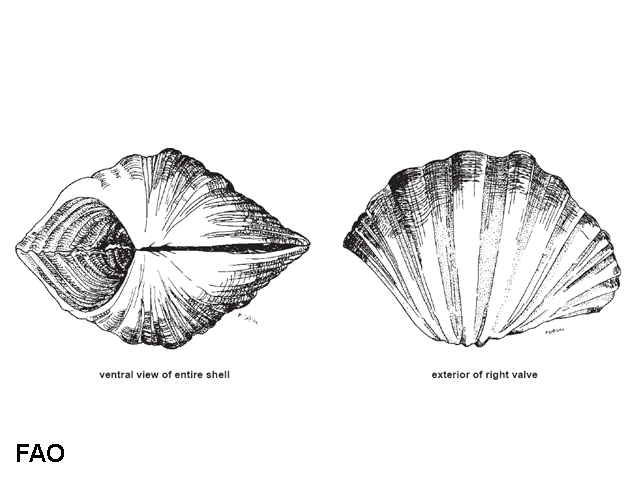| Cardiidae (cockles) |
| 41.1 cm SHL (male/unsexed) |
|
benthic; marine |
| Western Central Pacific: Restricted in the tropical western Pacific. From Sabah, Malaysia to Palau, north to Philippines and south to Indonesia. |
|
Its shell is thinner and smoother than that of H. hippopus, usually devoid of pigmentation, and more semi-circular in profile. The mantle is similar to that of H. hippopus (Rosewater, 1982), except that prominent papillae line the margins of the incurrent siphon. |
| Collected for food and shell (Ref. 348). Found in shallow waters. Young specimens often byssally attached to coral heads, mature specimens lack a byssus and lay unattached on the substrate (Ref. 348). |
|
(LR/cd); Date assessed: 01 August 1996 Ref. 123251)
|
| harmless |
|
Known throughout the Philippines (Ref. 821). A major target of the recent shell trade (Ref. 348). Tubbataha Reefs, Cagayancillo, is known to have the highest population density of this species globally in 2008 (Ref. 117184). Endangered (Ref. 89179). C: Refs. 348, 7693, 87108, 821, 117184, 121724, 128986; O: Ref. 89179, 821. |
Source and more info: www.sealifebase.org. For personal, classroom, and other internal use only. Not for publication.

